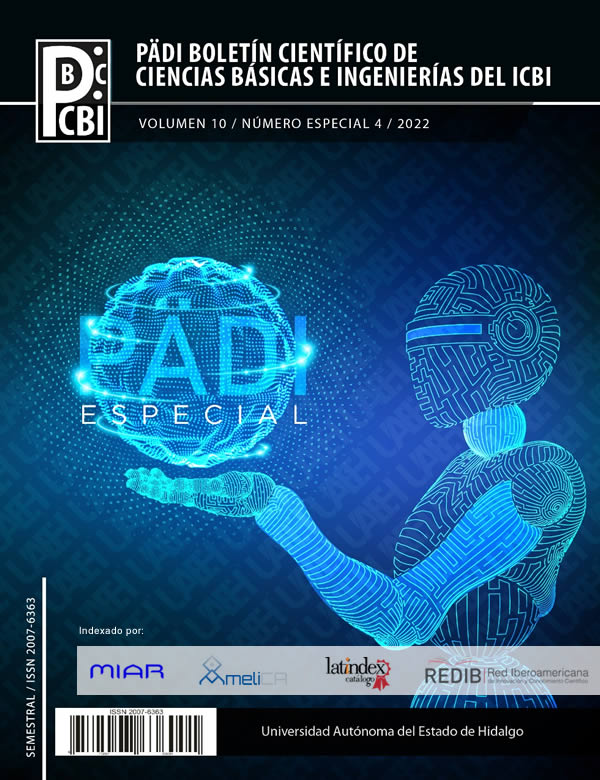Proposal for an architecture of a system of open educational resources between mathematical communities in higher education
Abstract
With the pandemic, open educational resources (OER) have been of great importance. Teachers at all levels had to change from the face-to-face modality to the online modality, since they required digital resources to complement the thematic content of the subjects. However, these resources still have important challenges that must be overcome, such as the difficulty in following the learning process and the difficulty in searching for the most appropriate resource. Even so, these resources have been used in mathematics subjects to improve the effectiveness of learning. In this work, a three-tier architecture is proposed for an OER system between mathematical communities of users in Higher Education Institutions to increase student academic performance. Functional architecture is presented where exhaustiveness, precision, and efficiency are evaluated with acceptable results, given that a group of users was able to solve a mathematical problem.
Downloads
References
Delgado, H, Delgado, MS & Hilton, J. (2019). On the efficacy of open educational resources: Parametric and nonparametric analyses of a university calculus class. International Review of Research in Open and Distance Learning, 20(1): 185–203. DOI: https://doi.org/10.19173/irrodl.v20i1.3892
Huang, R., Liu, D., Tlili, A., Knyazeva, S., Chang, T. W., Zhang, X., Burgos, D., Jemni, M., Zhang, M., Zhuang, R., & Holotescu, C. (2020). Guidance on Open Educational Practices during School Closures: Utilizing OER under COVID-19 Pandemic in line with UNESCO OER Recommendation. Beijing: Smart Learning Institute of Beijing Normal University.
Junker, M., Hoch, R. & Dengel, A. (1999). On the evaluation of document analysis components by recall, precision, and accuracy. Proceedings of the Fifth International Conference on Document Analysis and Recognition. ICDAR '99 (Cat. No.PR00318), pp. 713-716, doi: 10.1109/ICDAR.1999.791887.
Kersey, S. (2019). The Effectiveness of Open Educational Resources in College Calculus. A Quantitative Study. Open Praxis, 11(2), 185–193. DOI: http://doi.org/10.5944/openpraxis.11.2.935
Miao, F., Mishra, S., Orr, D., & Janssen, B. (2020). Directrices para la elaboración de políticas de recursos educativos abiertos. UNESCO Publishing. Recuperado el 2 de Mayo de 2022 desde: https://unesdoc.unesco.org/ark:/48223/pf0000373558
Miranda, H. L., Cantú, V. M. & Ramírez, M.A.(2016). Tecnologías de Información y Comunicación y Recursos Educativos Abiertos: Fórmula eficaz para aprender funciones trigonométricas. ECE Digital Revista en Ciencias de la Educación. Reflexiones sobre prácticas educativas. 6 (11). Recuperado el 2 de Mayo de 2022 desde: http://ece.edu.mx/ecedigital/
Mortera, F. (2013). Buenas prácticas para el uso académico de Recursos Educativos Abiertos (REA) y Objetos de Aprendizaje (OA). Edutec, Costa Rica. Recuperado el 02 de Mayo de 2022 desde: http://www.uned.ac.cr/academica/edutec/memoria/ponencias/jorge_mortera_17.pdf
Pelletier, K., Brown, M., Brooks, D.C., McCormack, M., Reeves, J., Arbino, N., Bozkurt, A., Crawford, S., Czerniewicz, L., Gibson, R., Linder, K., Mason, J. & Mondelli, V. (2021). 2021 EDUCAUSE Horizon Report Teaching and Learning Edition. Boulder, CO: EDU. Recuperado el 02 de Mayo de 2022 desde: https://www.learntechlib.org/p/219489/
Ricaldi E., M. L. (2014). Impacto de la aplicación de los recursos educativos abiertos en el aprendizaje de temas vinculados al triángulo en estudiantes del nivel de educación secundaria [Tesis de Maestría, Instituto Tecnológico de Monterrey]. http://hdl.handle.net/11285/621211
Temesio, S. (2015). Metadatos para recursos educativos. Palabra Clave (La Plata), 5(1), 1-18.
Tlili, A., Zhang, J., Papamitsiou, Z., Manske, S., Huang, R., Kinshuk & Hoppe, U. (2021) Towards utilising emerging technologies to address the challenges of using Open Educational Resources: a vision of the future. Education Tech Research Dev 69, 515–532. https://doi.org/10.1007/s11423-021-09993-4
UNESCO (2015). Directrices para los Recursos Educativos Abiertos en la Educación Superior. Paris: UNESCO. Recuperado el 02 de Mayo de 2022 desde: https://unesdoc.unesco.org/ark:/48223/pf0000232855.locale=es
UNESCO (2017). Second World OER Congress: Ljubljana OER action plan. Recuperado el 02 de Mayo de 2022 desde: https://en.unesco.org/sites/default/files/ljubljana_oer_action_plan_2017.pdf
UNESCO (2019). Recommendation on Open Educational Resources (OER). Recuperado el 02 de Mayo de 2022 desde: http://portal.unesco.org/en/ev.php-URL_ID=49556&URL_DO=DO_TOPIC&URL_SECTION=201.html
Venegas Muggli, J. I., & Westermann, W. (2019). Effectiveness of OER Use in First-Year Higher Education Students’ Mathematical Course Performance: A Case Study . The International Review of Research in Open and Distributed Learning, 20(2). https://doi.org/10.19173/irrodl.v20i2.3521
Wiley, D. A. (2000). Connecting learning objects to instructional design theory: A definition, a metaphor, and a taxonomy. The instructional use of learning objects, 2830(435), 1-35.













